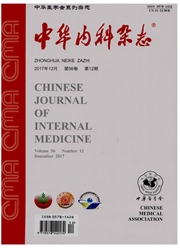

 中文摘要:
中文摘要:
目的探讨ID4、ZO-1基因甲基化定量检测作为基因标志在急性白血病(acute leukemia,AL)中的意义。方法采用硫化测序PCR(bisulfite sequencing PCR,BSP)法及甲基化特异性PCR(methylightion specific PCR,MSP)法检测AL中NB4细胞和健康供者骨髓(normal bone marrow,NBM)细胞的ID4、ZO-1基因的甲基化状况并进行分析。结果BSP法检测ID4基因在ALNB4细胞中甲基化阳性率为86.0%,显著高于NBM细胞甲基化阳性率(4.8%),差异有统计学意义(P〈0.05);ZO-1基因在ALNB4细胞系中甲基化阳性率为88.4%,显著高于NBM细胞甲基化阳性率(1.9%),差异有统计学意义(PP〈0.05)。采用MsP法检测9种AL细胞系,ID4、ZO-1基因甲基化水平在淋系来源的细胞系高于髓系来源的细胞系。结论ID4、ZO-1基因甲基化水平检测可作为新的AL基因标志物。
 英文摘要:
英文摘要:
Objective To analyse the gene marker significance of ID4 and ZO-1 genes quantity methylation level in acute leukemia (AL). Methods The methylated situations of ID4 and ZO-1 genes in AL and normal bone marrow (NBM) cells were detected by bisulfite sequencing PCR (BSP) and methylation specific PCR (MSP), and the data were analysed. Results In BSP method, the methylation positive rates of ID4 and ZO-1 genes in AL NB4 cell (86.0% and 88.4% ) were all higher than in NBM cells (4.8% and 1.9% ), and the differences all had statistical significance (Pall〈 0.05). In MSP method, acute lymphocytic leukemia cell lines had higher methylation levels of ID4 and ZO-1 genes than acute myeloblastie leukemia cell lines. Con- clusion ID4 and ZO-1 genes may be a new gene marker to evaluate AL prognosis.
 同期刊论文项目
同期刊论文项目
 同项目期刊论文
同项目期刊论文
 期刊信息
期刊信息
